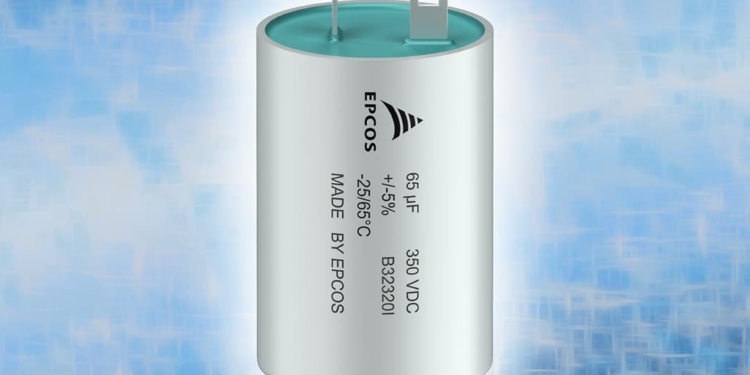Source: TDK news
TDK Corporation presents an extremely compact EPCOS film capacitor for the DC link of inverters.
With dimensions of just 40 mm x 58 mm (d x l) it offers a rated voltage of 350 V DC and a capacitance of 65 μF. This means that the capacitor, which has the order number B32320I2656J011, has a very high capacitance density of 0.9 μF/cm3 and offers up to 50 percent more capacitance per volume than comparable capacitors. The space it requires on the PCB is correspondingly small. Other features include the low ESR of just 10 mΩ and the high ripple current capability of 3.7 A.
Both the plastic can and the epoxy resin sealing material are designed to be flame-retardant in accordance with UL 94 V0. The capacitor is designed for a temperature range from -25 °C to +65 °C. The capacitor has an integral thermal fuse that trips at a current of 5 A and a temperature of 115 °C.
Typical applications include the HF filtering in inverters, for example in domestic appliances, as well as general DC applications.
Main applications
- HF filtering in inverters, general DC applications
Main features and benefits
- Very compact dimensions of just 40 mm x 58 mm (d x l)
- Very high capacitance density of 0.9 μF/cm3
- Low ESR of just 10 mΩ
- Integral thermal fuse
































